|
|
Post by srbsoul on Dec 23, 2011 1:42:11 GMT -5
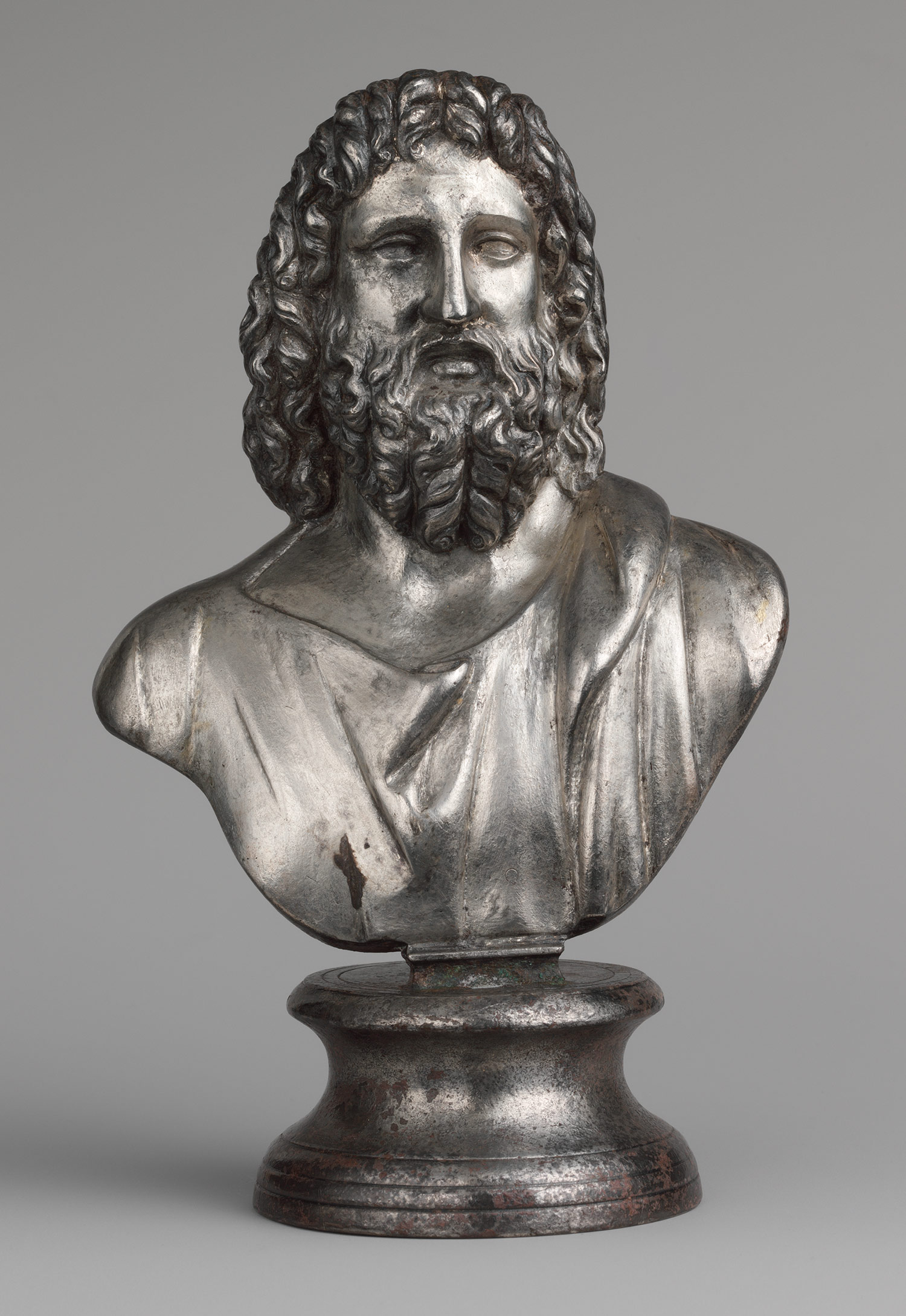 Alexander the Great tells us that was a second conquest which started from Naissus roughly the entire Yugoslavia territory, the highest concentration of society being Belgrade surroundings and which was led by the God Serbon (1330-1300 B.C); a great leader who proclaimed divity. Conquering lands to modern day India. His name was Serbo Merikodov but was also known as Sarbo/Sardo. Alexander the Great also told that Serbon was known as Heracles in Greek and Arshur Melkat in Hebrew. The Greeks created myths surrounding the stories of Heracles, omitting the true root of the name being Serbo. There was no Heracles only Serbo. Indian historians tell us that Aryans powerful monarchies and great empires with the same rights for every citizen; this was completely unthinkable for Greek philosophers and statesmen; this is another reason why Heracles cannot be compared to Serbon. Laonicus Chalcondyles, a Byzantine historian says; "Serbs, as a people, are the absolute oldest people. Serbs, Illyrians, Poles, Russians Sarmatians, and Veneti are one people, and they all speak the same language." According to Egyptian sources .1330 B.C the Minoan dynasty was conquered by Serbo and later he with the Serb people invaded Egypt; the Egyptians referred to him and his men as Serbans. Williams Albright tells us that Serbo brought the Ramses dynasty in Egypt and subsequently for Assyrian religious manifestations are brought back into Egypt. After Egypt, Diodorus says that Serbon conquered North Africa and Iberia (Spain). Indicopleusata, a Byzantine priest also confirmed this. Serbian toponyms have been found throughout North Africa. Iberia got its name from Iberians; a Serbian people living in Balkan brough in small waves by Serbo. Ptolemaeus mentions a city called Sarabis, Sarbanta, Uksama.... Diodorus tells of events after Iberia; Serbo conquered Gaul and establishes rule of law; in Gaul, Serbs build Alesia, the future capital of Gaul and the Celts. Diodorus says that Serbo ends his conquests in Italy and afterwards travels back to his empire the other side of the Adriatic. William Betham says that Etruscans from Italy beleived that they originate from God Serbon; Etruscans and Samnites are called Sarbeli. In Sardegna, Italy Serbian toponyms are also found. Lands conquered; Transition   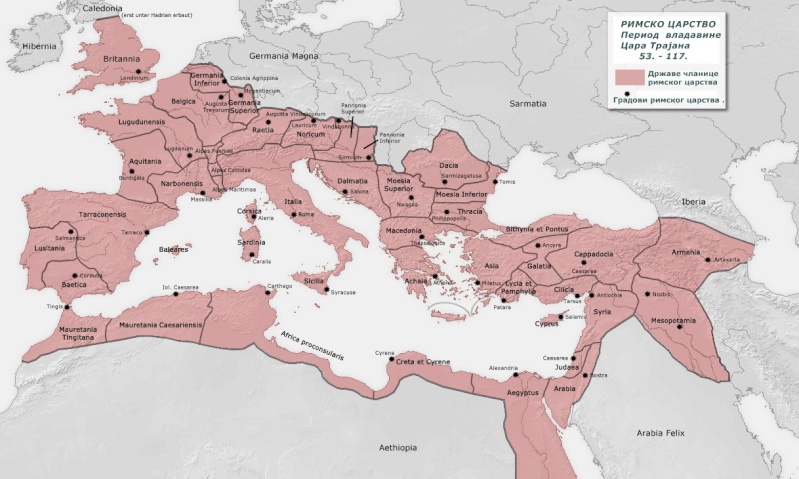 Serbon   Serbon head sculpture in Egypt.   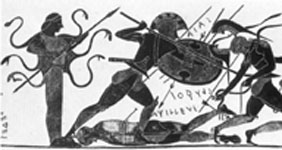   The relief in the rock - more than 3,500 years old two-headed white eagle (right) Serbs Goths, Geta, Heth, Hita, Hittita,- Kind of Egypt Hikosa and offering to the Serb people of Serbo. INSCRIPTION ON STONE 19th century in Egypt found a large black stone, with three labels on it. They gave him the name of Rosette and took it to the British Museum, where it is situated now. The stones are engraved three inscriptions in three languages, 196 years in Alexandria. The first inscription are asking for clues and the Egyptian language. Another sign that is the most comprehensive on the so-called Demotsko letter or, as some say, in Aramaic. The third inscription is in Greek. Rosette Stone. Western scientists have first read the Greek inscription, according to which Champollion deciphered hieroglifi. The middle label did not want to read. This was the case until a few years back, when the two Macedonians found a key that is read by the so-called "demotsko letters" and began to read the text medium. The surprise of the public was tremendous. Macedonians were screaming that it was the inscription on the Macedonian language, but - Macedonian language has only existed since 1946. year! The middle label is on Serbian language.  We have evidence that the Srbica used in the first dynasty of Egypt. Preview of Boševska - Tentov short, hieroglifi were used only as a decorative letter on the monuments, tombs, and temples. From hieroglifi is made simpler letter that Westerners call hieratik, then one is simpler, which called demotik. Both names are from the Greek language, it is not linen names. And from Srbica was made a separate letter, which called Westerners also hieratik and it does not differ from each other hieratika, although it is completely different. And then from this srbičkog hieratika made a special letter that Westerners call demotik, and mingle with the other demotikom. Epitaph on Rosetti is the srbičkom demotiku, so to call it temporary. This inscription gives us the answer to two very important questions, and also launches a new, big, issue. Primarily we provide evidence that the Serbian language was used in Alexandria, and put it in second place, behind Misirskoga, while the Greek goes to third position. The work of these two Macedonians runs great question - the origin of this so-called demotsko letter? Because, they claim to have found a letter that letter on vases from Vince. If it is determined that this is true, and is likely, then the script Srbica number two. Studies are in progress. We give here an overview of their work, as they are personally present at the First Congress of St. Petersburg. Stay Tuned |
|
|
|
Post by srbsoul on Dec 23, 2011 12:53:52 GMT -5
North African soldier/clothing. Honoring the Serbo God. 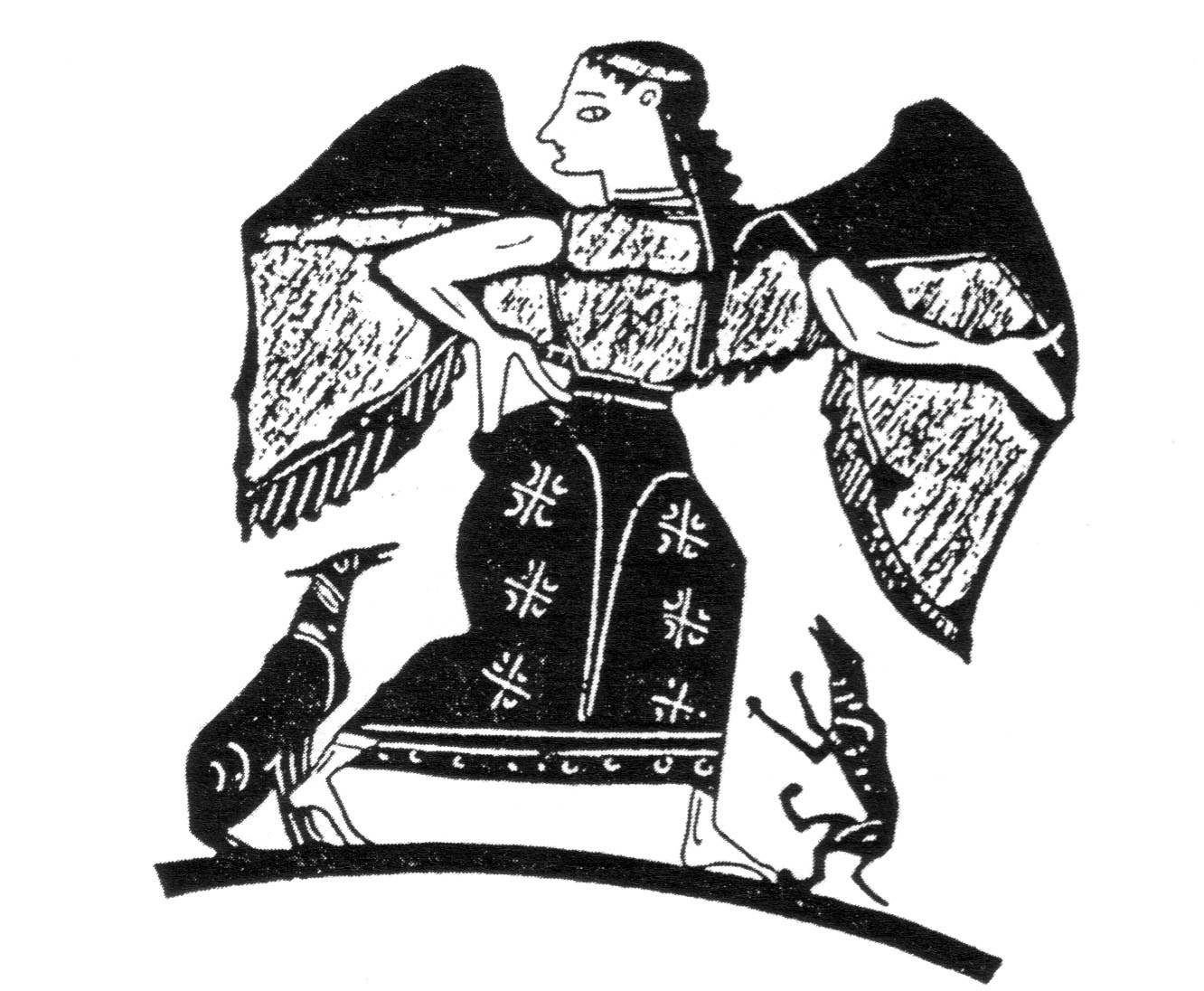 It is interesting that in the Old Slavonic language called Luna Luna, the name comes from the word whose meaning''light up''. The word''Moon''some feel very old, although it appears the only written records of 11 century. Mâsacʹ Old Church Slavonic term comes from the word''ICA'',''MASS''from which we come today and the word''measure''or''measured'', which clearly leads to the conclusion that the ancient Slavs and the Moon was a measure of time. ... And the old Slavs months they started the emergence of the New Moon as evidenced by the many superstitions and customs of the people associated with the appearance of a narrow crescent of the lunar sky. For example, it is considered that at the time when the sky he saw New Moon should want and what we will be met, others believe if at that point in their pockets with money that will have a whole month is not enough money, in some areas it is considered that the During the New Moon should not wash clothes because it will quickly wear out, others believe that you should not cut fruit trees and vineyards, etc.. Slovene origin of the name on our names for days, and generally Slavic names for days, have a logical meaning and a connection with religious practices as Slavic names originate from the time when Slavic tribes received Christianity. It is interesting that the current names for the days of the first reported among the South Slavs in the former Byzantine Empire, and with time, via Bulgaria, Slovakia and the Czech Republic, and spread among the other Slavic nations. At the beginning of our era, creating a new religion, Christianity, the Church introduced old Jewish Sabbath as a weekly holiday day off. However, in the second century Roman emperor Hadrian / Hadrian Publius Aelius 76-136. year. AD the 117th Emperor declared The AD After the death of Trajan / a great protector of the Roman tradition was a strong opponent of Christianity, and the law forbids the Christian Sabbath as a day off, and introducing a day of rest Sunday - Day of the Sun. ... at the same time accepting the new religion and a new calendar, Slavic peoples ''adopted''day of the Sun, as the Christian day of rest weekly, based on the above biblical commandment: delaj not, it's not the name for this time of the day turned into an expression of today's SUNDAY. Some believe that Sunday with the Slavs much older and dates back to before the times of the great migration of Slavs. The proof is supposedly the word of weeks and today the language of all Slavs. In J. Grim, the old Slavs began the week on Mondays / ponedeonik /. Hence comes the name: the day / SLE / week by week - Monday. TUESDAY name comes from the other, as the second day of the week. Wednesday was named as the middle day of the week, as the fourth Thursday and Friday as the fifth day. On this basis it is considered that the Old Sunday / weeks / have five working days. The sixth day of the Slavs in the elderly was also a day of rest, a day when''no''and works by J. Grimm thus the present name WEEK. Five of these educated šetstodnevnih Sunday a month, so that the 5h6 = 30, this is a very well coincided with the period of change in all four phases of the moon / 29.53 days / even better than in the case of 4 weeks of 7 days / 4h7 = 28 /. And some other people in the past week that they used was composed of 7 days. Egyptians had a week of 10 Maya 5 days. It is assumed that in the Old Slavs, next week, and Thursday was an important feast day dedicated to the god Perun, one of the supreme gods of Slavic mythology / Today, otherwise known as Elijah Thunder /. Even today, Baltic and Slavic Polabian Thursday called''''PERENDAN / Perunovdan /. Some believe that the other days of the week at the Old Slavic names of the gods wore. Seven-day week Slavic peoples are beginning to use only the transition to Christianity / 9.vek / and then shows the name of the sixth week day, Saturday. This word comes from the word''Jewish''which means SABATA week in the Jewish calendar. One example of a common origin and weekly calls on the Serbs, Russians, Slovaks, Poles, and let us serve table 2 From the table we see that the Russians for a week say''resurrection''as referred to stems from the biblical legend of the resurrection of Christ on the day of week''sacred''. The Russians used the name of 16 century. (...) names for the months of the Old Slavic origin for the Slavic peoples, who at that time beginning to accept the Christian religion, the names of the months are different from the Roman. It is believed that Slavic names originating from the calendar of the Slavs and the names were in connection with natural phenomena. In our country these names / thoughts on the then Socialist Federal Republic of Yugoslavia - prim. A.M. / keep for months have been among the Croats. For example, January is January, it was time to cut wood in the forest, in February - February, the month after the snow blizzard, and so on. Table 3 are given names for the months of Croats, Ukrainians, Poles and Belarusians. (...) The table notes the similarity in names, even though these people live in each other a great distance. It is noted that the names for the months and depend on climatic conditions. For example, since linden flower a month earlier in the south than in northern Europe, Croats called the June month of June, and the Poles July. Similarly, for the month / April / April and the month October / October /, as in southern Europe before coming spring and other seasons than in the north of the Ukrainians and Poles. For Poles noticed another interesting thing. In fact, heavily influenced by the Roman Catholic Church, they were Slavic names for March and May, replacing the Roman name. This they did and Belorussians, but only for May. Most of Slavic Peoples / Serbs, Macedonians, Bulgarians, Slovaks, Czechs / adoption of the Christian calendar adopted by the Roman names for the months, and Old Slavic names disappear from use. However, with the help of old written documents, calendars, church books and so we can identify and determine the old names for months, often referred to as folk names for the months. Each month, more people used the name. In various parts of our country's national names for the months are different. By Nenad Jankovic / Nenad Jankovic''Astronomy in tradition, customs and literature,''the Serbs, SANU, Belgrade 1951 / in our nation are used for the months following national names: JANUARY: prosinec, cut / Sečanj, cutting, memories, hewn, January , Sičane /, koložeg / koložek /, big month; BOGOJAVLJENSKI, svetojovanski, jovanjštak,''about John dne'',''some''of St. Sava. FEBRUARY: cut / ACP, chips, chips /, large chips, ljutij, February / aveljača, oveljača, velijača, Veljo /, Unor; Sretenjski. MART: Brezen / bresen, brezanj /, March, dry, Dryer, small cuts, letnik, Lezak, shark; Annunciation. APRIL: Cveten / flowering /, April, little April, brzosok, Duben, billiards, lažitrava, đurđevski. MAY: April / Traven /, the great April, May, flowering / cvijetanj, kvetan /, crvenik, čerčešnjak / crešnjar, crešar /; cesarean. JUNE: Čerešnjar / črešnjar, cherry /, IZOKOM, červen, crvenik, žitvar, June / Lapping /, lipštak; Petrovski. JULY: Red / črvenc /, July / srpan /, fire, žarkij, lepec / Lipec /, billiards, žetvar; ilijnski, svetoilinski, ilijanštak / ilijštak, ilijinštak /. AUGUST: Ruin, srpen / July, serpen /, August / kolovoc /, gumnik; makaven, Gospodjinski, velikogospođinski, gosodinštak,''some''of the Assumption, praobraždenski. SEPTEMBER: September / rujen /, vresen / bresenj /, grozdober, Gruden, Indian, miholjštak,, malogospođinski,''Lady''about a small, bugurojčin. OCTOBER: October, pazdernik, rzijen; pejčin-month mitrov, mitrovski, mitrovštak,''about''Mitra dne, lučinski, lučinštak. NOVEMBER: Gruden, November / November /, October, pazdernik; Mratinje, mratinjski, mratinštak, St. Andrew's Day, aranđeoski,''about''Aranđelova dne. DECEMBER: November / November /, December / prosinec /, gulemjut month calendar; nikoljštak,''about''St. Nicholas, bužukjov, Christmas,''''around Christmas. (...) New Year and welcome the emergence of its practices in the distant past, when our ancestors used the lunar calendar, the New Year it was not known. Instead it celebrated the emergence of a new moon, and the people of that era had a celebration every 30 days. Only much later, introducing solar calendar there is a celebration of New Year. ... When the Old Slavic New Year is celebrated as the birthday of the young Sun God''Christmas'', the winter solstice in late December. Namely, due to the apparent annual movement of the sun in the sky during the year to change the length of day / daylight / from 23 to September to 22 December day length decreases when the shortest of the year. After this date / called. Winter Solstice / day length increases and increases the height of midday sun and warmer days are coming, and soon the spring. Old Slavs, who like many other peoples of all the heavenly bodies most respected sun, considered then to be reborn god of the sun, which slowly grows each day stronger, so that is why all the days that followed nicer and warmer. How Old Slavs were not able to determine the exact date of the winter solstice, it is nearly certain, and this holiday is celebrated on 25th December, with a great religion and offering sacrifices. Same festival is celebrated in many other nations, for example in India, the birthday of the sun is celebrated 9th January. Old Slavs are celebrating this festive holiday, the great importance which was given to the sun since ancient times because it was the principal deity of Slavic religion. This feast is kept up to date with all the Slavic peoples, just as their transition to Christianity got other purpose. Namely, when the Christian Church among the Slavs spread his teachings, in the cases of people deeply rooted in pagan customs, was not able to simply ban them, but usually these old holidays proclaimed for some a, Christian holidays and pagan gods for a Christian saint. Thus Christmas became a Christian holiday, the birthday, not the young Sun God, but Jesus Christ. the same has happened with the Old Slavic god Perun, who became a Christian at St. Elias. Christmas Is not the origin of Christianity, the evidence is that it is still popularly regarded as the Christmas personality. In addition to the great religious ceremonies, the Old Slavs Christmas offerings and sacrifices. Using the basic rule that should be sacrificed to God of what is expected of him much more, Christmas is a victim of donated wheat and other crops, where he was asked to give a rich harvest, while a glass of wine intended for God should provide abundant fruit grape. In addition to knead and special cake, the size of a man. The priest who performed the ceremony began to izna cake and asked participants whether they see it. Once, they said to him to see him, the priest wished to make it next year do not see what he expressed a wish that next year the harvest is still fertile. This custom is kept up to date in some of the areas with the exception that as the cake kneading česnica. One of the members of the family hid for česnicu and asks the other if they see it. When they said to see him, he tells them:''Now a little, and not at all''next year. ... In the beginning the New Year of 25 December, there are some assumptions that New Year's computers from March / vernal equinox /. In most states this old folk name for the month of March - Year of manufacturing, which, presumably, comes from the word summer, and this month marks the beginning of a new summer and new year. In some parts of our country for the first day of March was held in the name letnik today. Disapearing Palace;   Take a close look;    |
|
Kralj Vatra
Amicus
 Warning: Sometimes uses foul language & insults!!!
Warning: Sometimes uses foul language & insults!!!
20%
Posts: 9,814
|
Post by Kralj Vatra on Dec 23, 2011 13:46:52 GMT -5
This is all pseudohistory. right, a handful of Slavs came in the balkans and slavicized any sqr meter of land... Makes sense.... or (in Emperor's version) some unknown number of slavs, with unknown cultural and physical strengths came in the balkans and somehow (also unknown) managed to slavicize an unknown number of ex-super-civilized-Greeks and became barbarians.... or (greek nationalistic POV), some lowlife peasants came to Greece (they don't mention that they (slavs) created more than 4,000 cities and villages) and then was absorbed by the mighty Greeks, bla bla bla..... (they also do not mention that from the very very very few medieval heroes worshiped in Greece two of them was Marko Kraljevic and Milos Obilic....) (not to mention the very few existing fairy tales, fairies, living greek mythilogy (not ancient crap) which is 100% Serbian). Up to now, most non-slav theories about Slavs suck. The non-migration theory has its flaws, but the migration theory sucks even more. |
|
Kralj Vatra
Amicus
 Warning: Sometimes uses foul language & insults!!!
Warning: Sometimes uses foul language & insults!!!
20%
Posts: 9,814
|
Post by Kralj Vatra on Dec 23, 2011 13:55:53 GMT -5
All i know is that comparing modern Greeks to modern Serbs is like comparing this :  to this :  So i suspect some very heavy cooking has been done (by the west) to promote a pseudo-history. Basically if what Srbsoul describes is pseudo-history, then all the garbage we learned in school should (by analogy) be the definition of absolute crap. |
|
Kralj Vatra
Amicus
 Warning: Sometimes uses foul language & insults!!!
Warning: Sometimes uses foul language & insults!!!
20%
Posts: 9,814
|
Post by Kralj Vatra on Dec 23, 2011 15:15:42 GMT -5
4,000 Greek cities created by Slavs? In 1945 there were : 400++ Serbian (slavic) place names in Epiros (west greece) 400++ Serbian (slavic) place names in Peloponese (south greece) 1000++ Serbian (slavic) place names in greek Makedonia In 1926, there has been a MASSIVE renaming campaign (documented here: pandektis.ekt.gr/pandektis/handle/10442/4968?locale=en ) e.g. pandektis.ekt.gr/pandektis/simple-search?query=ellinikonMore than half of Greek toponyms were renamed. Considering that Slavs fully inhabited and controlled Greece for at least 500 AD -> 900 AD (when those toponyms were created) one can deduct : 1) the huge cultural power and creativity of the slavs 2) unfortunately, the absence of anything Greek... or Greek related... In the above toponyms, elements such as names of rivers, mountains, springs are not included : e.g. en.wikipedia.org/wiki/Smolikas www.getamap.net/maps/greece/ioannina/_olytsika/The lake of our city (name pamvotida, then named OZEROS), had 160 springs. Slavs gave a name for EVERY EACH ONE OF THEM. Still the local vlahs are unable to give greek names to those springs.... CCCC |
|
|
|
Post by srbsoul on Dec 23, 2011 18:18:37 GMT -5
Interesting... Slav-Serb toponyms prevail all over europe, from Crete island north to scandinavia.... SERB-SLAV : The greatest ancient culture in europen soil.... nuff said. Serbian toponyms are everywhere and that's just the beginning. With all the other evidence the toponyms become useless compared. 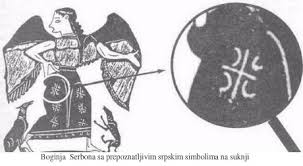 More ancient Greek vase motifs same as on tombstones More ancient Greek vase motifs same as on tombstones  Lands of Serbia ("Slavonic") symbol of God's hands Lands of Serbia ("Slavonic") symbol of God's hands  Pay attention to the details.  This vessel has been dated to ca. 530 B.C. and is housed in the Luvre museum, Paris, France This vessel has been dated to ca. 530 B.C. and is housed in the Luvre museum, Paris, France |
|
|
|
Post by Novi Pazar on Dec 23, 2011 18:27:28 GMT -5
Guys with the vinca symbol, the cross with the 4 cyrillic C's, this is coincidental. C'mon, first cyrillic was devised by two Greek brothers for slavs, secondly, l'm sure that the vinca symbol meant something else, not in the way its translated today.
Guys, sorry, this is comparible to Albanian history.
|
|
|
|
Post by srbsoul on Dec 23, 2011 18:36:13 GMT -5
Nemanja Parliament against heretic We see two groups of the then bishop of the Church in different attire. Left and about Nemanja, with a halo of sanctity around the head, then they are bishops of the Church who had already accepted the Byzantine version of Christianity and are already in the vestments of the Byzantine style. It was already 4-5 years of residence in the monasteries of St. Sava of the Holy Mountain, which are under the jurisdiction of the Byzantine monasteries of Constantinople Patriarchate. We see two groups of the then bishop of the Church in different attire. Left and about Nemanja, with a halo of sanctity around the head, then they are bishops of the Church who had already accepted the Byzantine version of Christianity and are already in the vestments of the Byzantine style. It was already 4-5 years of residence in the monasteries of St. Sava of the Holy Mountain, which are under the jurisdiction of the Byzantine monasteries of Constantinople Patriarchate.  Take a look at this style. They neither had temples nor clergy. These were Christians of Serb faith, not the Byzantine variant. The Greeks introduced the Byzantine religion to the Serbs, which Nemanja foresaw as evil herecticsm.  Solar symbols with solar crosses, a church near Leskovac. This is an example of the Greek-Byzantine extermination of Serbia cultural relgious heritage. In civilized countries, and among civilized people these monuments would be in museums, or be protected by the state where they are found. Steal other people's tombstones, profane and installed in their places of worship can only be false by those who pray to God and who are willing to make everyone worse evil.
|
|